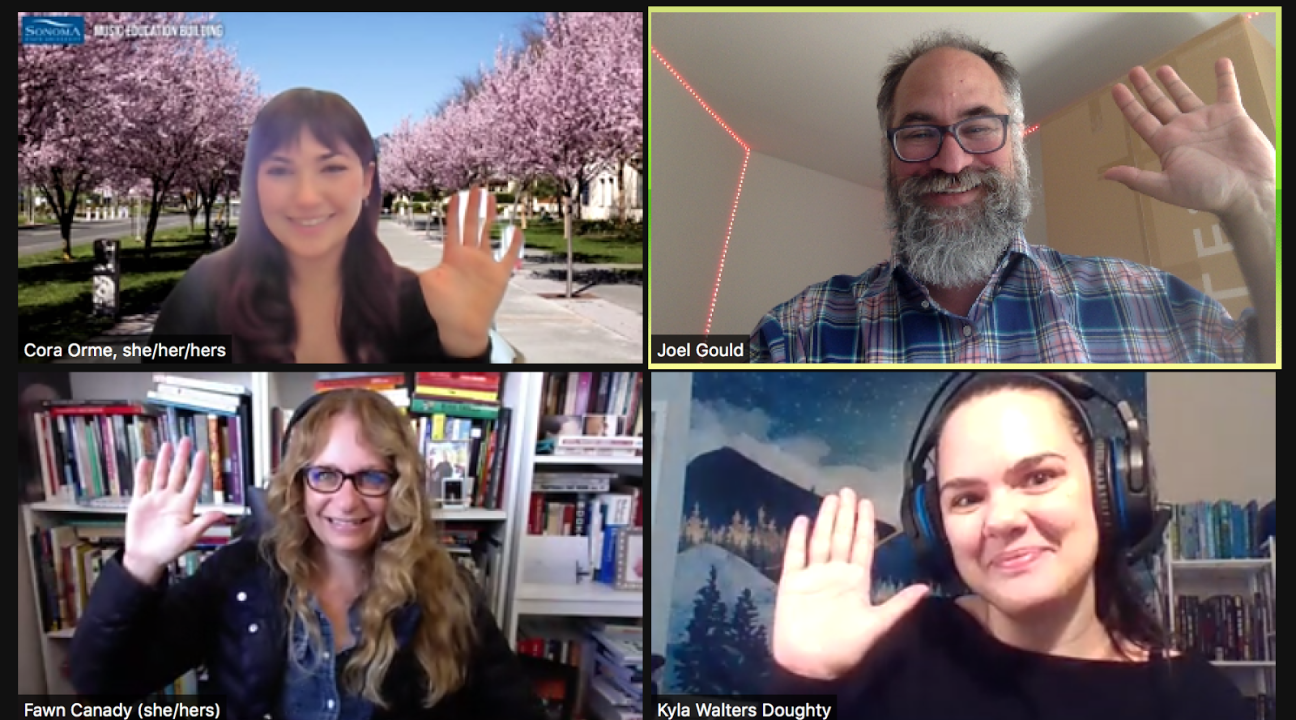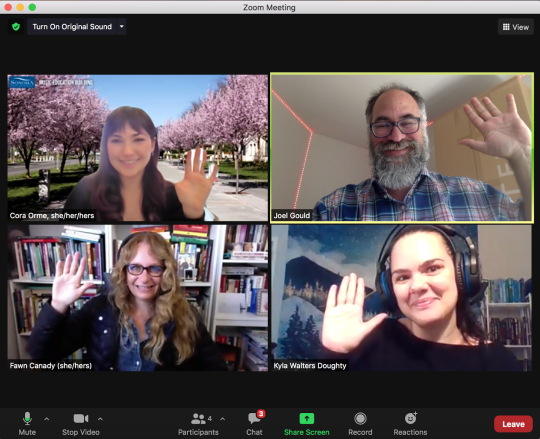SSU Student and Faculty Experiences of Emergency Remote Instruction
SSU Student and Faculty Experiences of Emergency Remote Instruction
Following up on the April release of their preliminary findings, “Learning Experiences during the COVID-19 Pandemic: Snapshot from Fall 2020 Survey”, the SSU research team of Fawn Canady (Education), Kyla Walters (Sociology), Cora Orme (LARC), and Joel Gould (CTET) has now produced a more detailed and comprehensive report:
SSU Student and Faculty Experiences of Emergency Remote Instruction. This report presents the findings of three surveys, of students (Spring 2020 and Fall 2020) and faculty (Fall 2020).
Report spotlight video:
In April, the team also was joined by a group of faculty for a data-driven discussion about teaching and learning during COVID-19. Here is the portion of the workshop where they briefly presented their preliminary findings
COVID Research Spotlight
Q&A interview with the authors:
Question: What have you learned from this project that is going to change how you approach the next semester
Fawn: More than anything, I learned that faculty and students shared many of the same challenges. This resulted in an iterative process of refining course content, activities, and assessments. Understanding how students experienced various aspects of online learning has also challenged me to rethink how synchronous time is spent and how to better align assignments and assessments with real world experience and events. Really, it’s about being mindful of the purpose and application of our work. Like some of the respondents in the survey, I am excited by the opportunity to rethink everything about my teaching.
Joel: Right now, I am immersed in preparing for CTET’s Online Facilitation Fundamentals course, this summer. The student responses to our questions helped me better understand how critical clear communication is for our student learning objectives, and assignment descriptions, and the overall human presence in our remote courses. I was already convinced that a beautiful, balanced, concise, and well organized Canvas course would help students be successful, but student responses to our questions impressed upon me that even when we think we have it all dialed in, there is still tremendous room for improvement and that it will have a direct impact on student learning.
Kyla: Flexibility ought to be my new middle name. From exchanges with my own students, I knew they appreciated my being gracious with extensions and forgiving late penalties. But this research helped show me the more abstract role that flexibility plays in forming positive relationships and effectively coaxing the deepest thinking from our students during multiple crises. I’ll also be discarding my optional “drop-in sessions” in favor of “optional student spaces” to discuss assignments, brainstorm ideas, and so forth. The survey data indicated that students both value and elect to attend regularly scheduled activities. No need to take those poorly attended virtual drop-in office hours personally. There’s more to the story.
Question: Why would you recommend that faculty read this research report?
Fawn: It’s important to understand how we, faculty and students, experienced this moment and how we might use this as an opportunity to come back “better” rather than back to “normal.” One of the most useful aspects of this report is the ability to compare personal teaching experiences and anecdotal information about our own students’ experiences with those of others. Also, I think there are important equity issues that surfaced in this report for both students and faculty such as unequal distribution of labor for women and caretakers, access to technology and reliable infrastructure, and the historical and ongoing effects of racism and income inequality. The effects of mental and emotional health also figured prominently in faculty and student experiences. I wonder about the long term effects of this experience for people who already faced systemic obstacles. Even though the report is based on a small sample and preliminary data, it reflects national trends.
Joel: This report captures the diversity of experiences that faculty and students shared over the past year. The responses of students and faculty to our survey questions were raw and visceral - for me, these are the most compelling sections of the report to read. I feel like I learn something important from every response. This past year was pretty brutal for all of us. Working on this report made me feel a deeper connection to our community in crisis and perseverance, and I think it will help me better support our teachers and students through the changes that will continue to come.
Kyla: If you want to know more about how SSU students and other faculty have been doing over these last 15 months, then check out this report. Please consider this report an opportunity to reflect on this unprecedented period of emergency remote education.
Question: Did you find anything in this research that surprised you or challenged your preconceptions going into this research project?
Fawn: The sense of solidarity and empathy surprised me. In spite of the immense challenges that faculty faced personally and professionally during COVID-19, they were very focused on the wellbeing and success of their students.
Joel: At the beginning of the pandemic, I was really concerned about students that needed better computer equipment, internet access, and places to study that were conducive to learning. I had also helped some faculty who lived in remote areas, where reliable internet was not available. I had many Zoom meetings with teachers working in makeshift workspace with young children climbing over their shoulders. But the technological struggle that many faculty faced to successfully teach wasn’t clear to me. When I put the technology needs assessments tables for the faculty and the students side by side, I was struck that our faculty experienced these challenges to equal or greater measure as our students.
Kyla: I wasn’t aware how many of our faculty face problems accessing high-speed internet and decent devices. Lecturers reported these problems more than tenure-line faculty. Learning more about the challenges of my “contingent” colleagues certainly gave me pause. It also underscores the importance of meaningful dialogue and solidarity across faculty ranks.
Question: What did you discover in this research that was most interesting to you?
Fawn : I am excited by the transformations in pedagogy, especially by faculty who would otherwise never teach an online course or incorporate technology into their teaching. I was interested in the ways that faculty adapted over the course of emergency remote instruction. In preliminary data, faculty reported growing confidence and competence and I am curious about how this will/will not change our practice. I’m hopeful that it does. We have an opportunity to change on an unprecedented scale, with or without technology. The stories and data in this report also make visible the ways historical and current events impact teaching and learning. I think we’re still learning about this aspect. I wonder if we will have more empathy for students and understand on a deeper level what it’s like to work under extreme duress beyond COVID-19.
Joel: I was surprised at the level of detail that students provided about how different aspects of synchronous Zoom meetings helped them learn. Much of my experience with remote learning in the past was with asynchronous courses, which best practices in online education generally encourage because we know it provides more level playing field for all learners. For me, this raised questions about how we can make sure those same learning objectives are met within asynchronous courses. It also helped me better understand the affordances and challenges of different remote learning formats.
Kyla: I appreciated how much labor my colleagues invested into their teaching work during the pandemic. I also loved reading students’ own words in response to the open-ended questions. On a more personal note, these data felt like a chance to fill the social and knowledge voids that being away from campus have created. The survey data we gathered from students and faculty offered a showcase of the voices I’ve been missing. Many thanks to all of our respondents!



